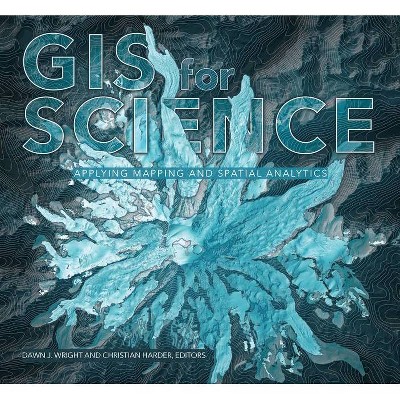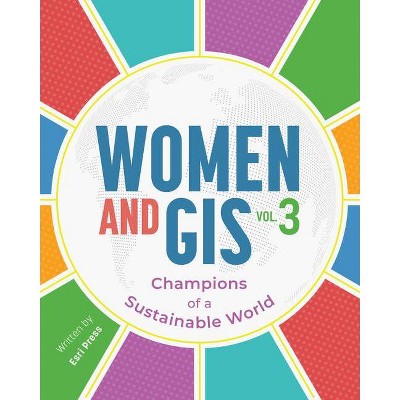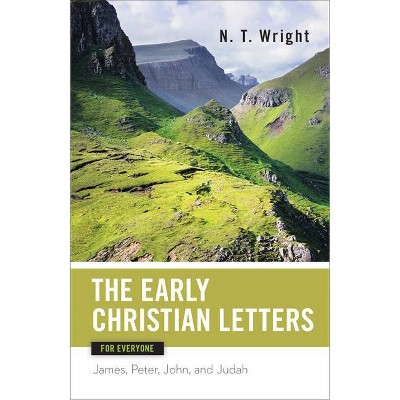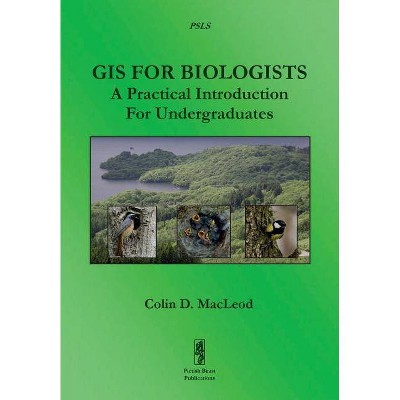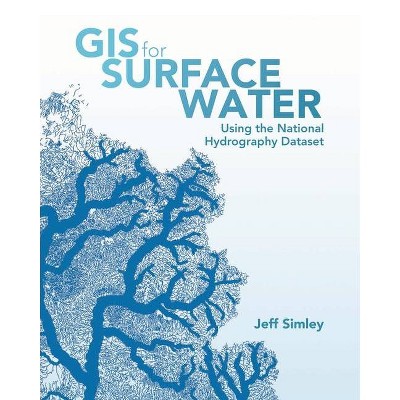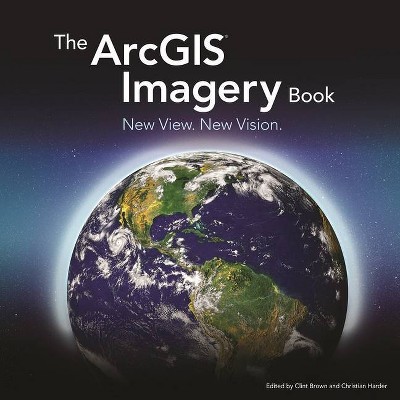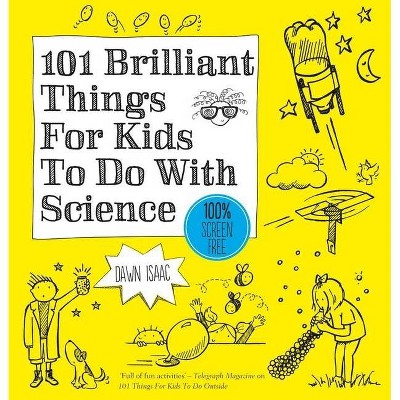GIS for Science, Volume 2 - by Dawn J Wright & Christian Harder (Paperback)
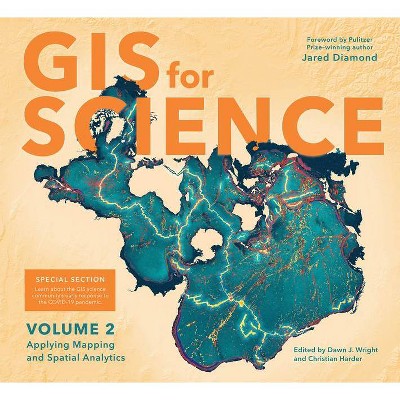
Similar Products
Products of same category from the store
AllProduct info
<p/><br></br><p><b> About the Book </b></p></br></br><p><em>GIS for Science: Applying Mapping and Spatial Analytics</em>, Volume 2 shows readers how scientists working on the world's most pressing problems apply geographic information systems--GIS.</p><p/><br></br><p><b> Book Synopsis </b></p></br></br><p><strong>Merging the rigor of the scientific method with the technologies of GIS</strong></p> <p><em>GIS for Science: Applying Mapping and Spatial Analytics</em>, Volume 2 brings to life a continuing collection of current, real-world examples of scientists using geographic information systems (GIS) and spatial data science to expand our understand of the world. Co-edited by Esri Chief Scientist Dawn Wright and Esri Technology Writer and Information Designer Christian Harder and with a foreword by Pulitzer Prize winner Jared Diamond, these case studies are part of a global effort to find ways to sustain a livable environment for all life on this planet. </p> <p>The contributors of <em>GIS for Science: Applying Mapping and Spatial Analytics</em>, Volume 2 represent a cross section of scientists who employ data gathered from satellites, aircraft, ships, drones, and myriad other remote-sensing and on-site technologies. This collected data is brought to life with GIS and the broader realm of spatial data science to study a range of issues relevant to our understanding of planet Earth--including epidemiology in light of the COVID-19 pandemic; sustainable precision agriculture; predicting geological processes below the surface of the earth; leveraging GIS near-realtime disaster response, recovery, resilience and reporting; the latest innovations in monitoring air quality; and more. Their stories also show in very practical terms how ArcGIS software and the ArcGIS Online cloud-based system work as a comprehensive geospatial platform to support research, collaboration, spatial analysis, and science communication across many settings and communities. A rich supplementary web site--<strong>gisforscience.com</strong>--includes actual data along with additional maps, videos, web apps, story maps, workflows and snippets of computer code, including Python notebooks, for readers curious to learn more.</p> <p>Written for professional scientists, the swelling ranks of citizen scientists, and anyone interested in science and geography, <em>GIS for Science: Applying Mapping and Spatial Analytics</em>, Volume 2 offers wonderful examples of our impulse to dream, discover, and understand, as coupled with the rigor and discipline of the scientific method and the foundation of geography. See how scientists from a variety of disciplines are solving some of the world's most pressing problems using geographic information systems--GIS.</p><p/><br></br><p><b> From the Back Cover </b></p></br></br><p><em>GIS for Science, Volume 2: Applying Mapping and Spatial Analytics</em> brings to life a continuing collection of real-world examples of scientists using geographic information systems (GIS) and spatial data science to expand our understanding of the world. They are part of a global effort to find ways to sustain a livable environment for all life on the planet. At Esri, we called this The Science of Where(R), a concept that merges our impulse to dream, discover, and understand with the rigor and discipline of the scientific method and the foundation of geography. As such, GIS provides a framework for applying science to almost every human endeavor as we aspire to transform the world through mapping analytics.</p> <p>The stories in this book are written for professional scientists, the swelling ranks of citizen scientists, and anyone interested in science and geography. The contributors represent a cross section of scientists who employ data gathered from satellites, aircraft, ships, drones, and myriad other remote-sensing and on-site technologies. This data is brought to life with GIS and the broader realm of spatial data science to study a range of issues relevant to our understanding of planet Earth and beyond. Scientists are documenting an array of geographically oriented issues ranging from climate change, natural disasters, and the loss of biodiversity to political strife, disease outbreaks, and resource shortages.</p> <p>The examples in <em>GIS for Science, Volume 2: Applying Mapping and Spatial Analytics</em> show how ArcGIS(R) software and the ArcGIS(R) Online cloud-based system work as a comprehensive geospatial platform to support research, collaboration, spatial analysis, and science communication across many settings and communities. In these chapters, you'll learn about sustainable precision agriculture, predicting geological processes below the surface of the earth, leveraging GIS near-realtime disaster response, recovery, resilience and reporting, the latest innovations in monitoring air quality and much more. These stories, along with the supplementary resources online, present GIS ideas and inspiration that users can apply across many disciplines, making this volume relevant to diverse scientific audiences.</p>--Dawn Wright and Christian Harder<p/><br></br><p><b> Review Quotes </b></p></br></br><br><p> "GIS for Science is no standard book. With vivid imagery, lucid writing, interactive learning, and compelling, relevant examples from Earth's past, present, and future, GIS for Science is a modern manual for understanding that integrative spatial analysis and visualization is the big data revolution most vital to the quality of all life on Earth."</p> <p>-- Healy Hamilton, Chief Scientist of NatureServe</p>-- "Healy Hamilton"<br><br><p>" This is a geoscience book for the 21st century! Cutting edge research examples and gloriously illustrated state of the art GIS-enabled techniques come together to show us how to understand our planet in ways not possible even a few years ago.</p> <p>-- Margaret Leinen, Director of Scripps Institution of Oceanography -</p>-- "Margaret Leinen"<br><br><p>GIS has become THE foundational tool for all things environmental - from conservation to climate change to environmental justice. This astonishing book beautifully displays GIS in all its scientific, artistic, and creative splendor."</p> <p>-- Peter Kareiva, Director, UCLA Institute of the Environment and Sustainability</p>-- "Peter Kareiva"<br><br><p>GIS provides the platform that allows us to generate a holistic perspective of the natural world. Given the relevance of this geospatial perspective for all aspects of society, I hope this beautiful book will inspire a wide range of people to embrace the Science of Where.</p> <p>-- Thomas Crowther, Director, Global Forest Biodiversity Initiative, ETH-Zurich</p>-- "Thomas Crowther"<br>
Price History
Cheapest price in the interval: 31.99 on October 23, 2021
Most expensive price in the interval: 31.99 on November 8, 2021
Price Archive shows prices from various stores, lets you see history and find the cheapest. There is no actual sale on the website. For all support, inquiry and suggestion messagescommunication@pricearchive.us
